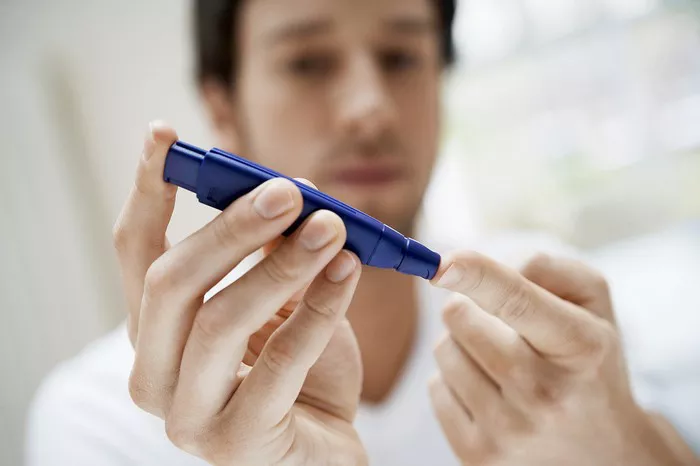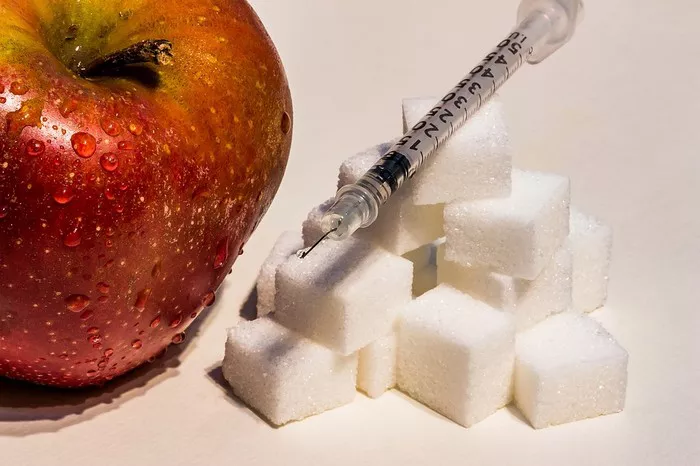Managing diabetes through diet is a cornerstone of effective treatment and long-term health. As a professional in the field of diabetes care, I aim to provide a detailed, evidence-based guide on what to eat to control blood sugar levels effectively. This article will cover various aspects of dietary management, including macronutrients, micronutrients, meal timing, and practical tips for making sustainable dietary changes.
Understanding Carbohydrates and Their Impact on Blood Sugar
Carbohydrates are the primary macronutrient affecting blood sugar levels. When consumed, carbohydrates break down into glucose, which enters the bloodstream and raises blood sugar levels. Therefore, understanding the types of carbohydrates and their impact on blood sugar is crucial for managing diabetes.
Simple vs. Complex Carbohydrates
Simple carbohydrates, found in foods like sugar, honey, and refined products, cause rapid spikes in blood sugar levels. On the other hand, complex carbohydrates, found in whole grains, vegetables, and legumes, are digested more slowly, leading to a gradual increase in blood sugar.
Simple Carbohydrates:
- Foods: Table sugar, syrups, candy, baked goods made with white flour
- Impact: Rapid increase in blood sugar, often leading to spikes and crashes
Complex Carbohydrates:
- Foods: Whole grains (oats, brown rice, quinoa), vegetables, legumes (beans, lentils)
- Impact: Slower digestion, resulting in a more gradual rise in blood sugar levels
Glycemic Index and Glycemic Load
The glycemic index (GI) is a measure of how quickly a carbohydrate-containing food raises blood glucose levels. Foods with a high GI raise blood sugar rapidly, while low-GI foods have a slower, more moderate effect.
Low GI Foods:
- Examples: Most fruits and vegetables, beans, whole grains, nuts
- Benefits: Help maintain stable blood sugar levels
High GI Foods:
- Examples: White bread, white rice, potatoes, sugary drinks
- Drawbacks: Can cause rapid spikes in blood sugar
Glycemic load (GL) takes into account the amount of carbohydrate in a food serving along with its GI. It provides a more accurate picture of how a food will impact blood sugar levels.
Balancing Carbohydrate Intake
For individuals with diabetes, the goal is to balance carbohydrate intake throughout the day to avoid large fluctuations in blood sugar levels. This can be achieved by:
- Spacing out carbohydrate intake evenly across meals and snacks
- Choosing high-fiber, low-GI foods
- Pairing carbohydrates with protein and healthy fats to slow digestion
The Role of Protein in Blood Sugar Management
Protein has minimal direct impact on blood sugar levels, making it an essential component of a diabetes-friendly diet. Including adequate protein in each meal can help stabilize blood sugar by slowing carbohydrate absorption.
High-Quality Protein Sources:
- Lean meats: Chicken, turkey, lean cuts of beef and pork
- Fish: Particularly fatty fish like salmon, mackerel, and sardines, which are rich in omega-3 fatty acids
- Plant-based proteins: Beans, lentils, tofu, tempeh, edamame
- Dairy: Greek yogurt, cottage cheese (choose low-fat options if needed)
Protein and Satiety
Protein promotes satiety, helping to reduce overall calorie intake and manage weight, which is critical for diabetes control. A higher protein intake has been linked to improved blood sugar control and reduced A1C levels in people with type 2 diabetes.
Incorporating Healthy Fats
Healthy fats are another vital component of a diabetes-friendly diet. They do not raise blood sugar levels and can provide a sense of fullness, which aids in managing hunger and preventing overeating.
Types of Fats
Unsaturated Fats:
- Sources: Olive oil, avocados, nuts, seeds, fatty fish
- Benefits: Can improve heart health, which is particularly important for individuals with diabetes who are at higher risk of cardiovascular disease
Saturated Fats:
- Sources: Red meat, butter, cheese, and other animal products
- Recommendations: Limit intake to reduce the risk of heart disease
Trans Fats:
- Sources: Partially hydrogenated oils, some margarines, processed snack foods
- Recommendations: Avoid completely, as they increase the risk of heart disease
Balancing Fat Intake
Incorporating unsaturated fats while limiting saturated and trans fats can help improve overall health and support blood sugar management. This balance is crucial for maintaining cardiovascular health, which is often compromised in individuals with diabetes.
The Importance of Fiber
Dietary fiber, particularly soluble fiber, plays a significant role in managing blood sugar levels. Fiber slows the absorption of sugar and improves blood sugar control.
High-Fiber Foods:
- Fruits: Apples, berries, pears
- Vegetables: Broccoli, carrots, leafy greens
- Whole grains: Oats, barley, quinoa
- Legumes: Beans, lentils, chickpeas
- Nuts and seeds: Almonds, chia seeds, flaxseeds
Fiber Recommendations
The American Diabetes Association recommends aiming for at least 25-30 grams of fiber per day. Incorporating a variety of high-fiber foods into each meal can help achieve this goal and improve blood sugar management.
Vitamins and Minerals for Blood Sugar Control
Certain vitamins and minerals play a critical role in blood sugar regulation and overall metabolic health. Ensuring adequate intake of these nutrients can support better diabetes management.
Key Nutrients:
Magnesium:
- Role: Involved in glucose metabolism and insulin action
- Sources: Leafy greens, nuts, seeds, whole grains
Chromium:
- Role: Enhances the action of insulin
- Sources: Broccoli, barley, oats, green beans
Vitamin D:
- Role: May improve insulin sensitivity
- Sources: Fatty fish, fortified dairy products, sun exposure
Omega-3 Fatty Acids:
- Role: Reduce inflammation, improve heart health
- Sources: Fatty fish, flaxseeds, chia seeds, walnuts
Supplementation
While obtaining nutrients from food is ideal, supplementation may be necessary in some cases. Consult with a healthcare provider to determine if supplements are needed based on individual dietary intake and health status.
Meal Timing and Frequency
When and how often you eat can significantly impact blood sugar levels. Spacing meals and snacks evenly throughout the day can help maintain stable blood sugar levels and prevent large spikes or drops.
Regular Meals and Snacks
Eating regular meals and snacks helps to:
- Prevent blood sugar spikes and crashes
- Maintain energy levels
- Control hunger and reduce overeating
Intermittent Fasting
Intermittent fasting (IF) has gained popularity as a potential strategy for managing blood sugar levels. Some studies suggest that IF can improve insulin sensitivity and help with weight management. However, it may not be suitable for everyone, especially those on insulin or other medications that lower blood sugar. It’s essential to consult with a healthcare provider before starting any fasting regimen.
Practical Tips for a Diabetes-Friendly Diet
Implementing dietary changes can be challenging, but with practical tips and strategies, it becomes more manageable.
Plan Ahead
- Meal Planning: Plan meals and snacks for the week to ensure balanced nutrition and avoid last-minute unhealthy choices.
- Grocery Shopping: Make a list of healthy foods to buy and stick to it, avoiding impulse purchases of unhealthy items.
Portion Control
- Measuring Portions: Use measuring cups and food scales to ensure appropriate portion sizes.
- Mindful Eating: Pay attention to hunger and fullness cues to avoid overeating.
Healthy Cooking Techniques
- Grilling, Baking, Steaming: Opt for cooking methods that use less oil and retain nutrients.
- Herbs and Spices: Use herbs and spices to add flavor without extra calories or sodium.
Reading Food Labels
- Ingredients List: Look for whole foods and avoid items with added sugars and unhealthy fats.
- Nutrition Facts: Pay attention to carbohydrate content, fiber, and serving size.
Staying Hydrated
- Water: Drink plenty of water throughout the day to stay hydrated and help regulate blood sugar levels.
- Limit Sugary Drinks: Avoid sugary beverages like soda and fruit juices, which can cause rapid blood sugar spikes.
Seek Professional Guidance
- Registered Dietitian: Work with a registered dietitian specializing in diabetes to create a personalized eating plan.
- Regular Monitoring: Keep track of blood sugar levels and adjust the diet as needed based on readings and professional advice.
Conclusion
Managing diabetes through diet requires a comprehensive understanding of how different foods impact blood sugar levels and overall health. By focusing on a balanced intake of carbohydrates, proteins, and fats, incorporating high-fiber foods, and ensuring adequate vitamins and minerals, individuals with diabetes can achieve better blood sugar control and improve their quality of life. Practical strategies such as meal planning, portion control, and mindful eating, along with professional guidance, can support sustainable dietary changes and long-term diabetes management.
By adopting these dietary principles and making informed food choices, individuals with diabetes can take proactive steps towards maintaining stable blood sugar levels and promoting overall health and well-being.
Related topics:
I Am Prediabetic: What Foods Should I Avoid?


























